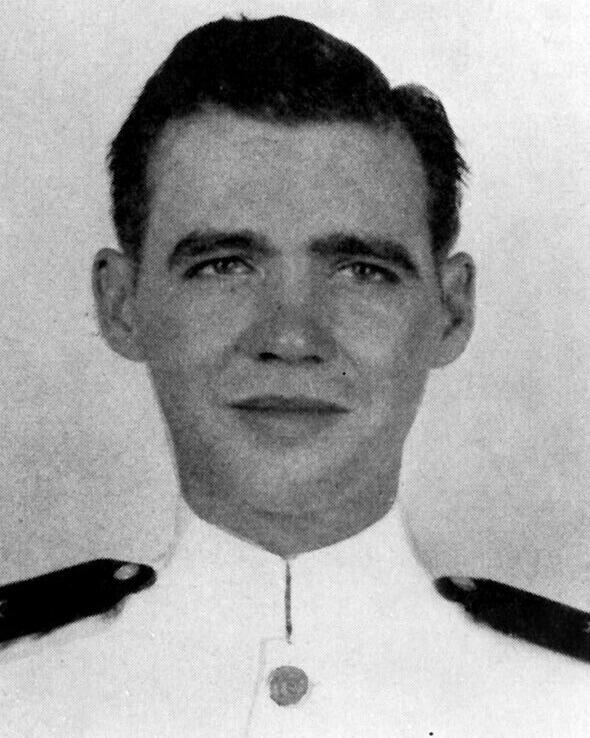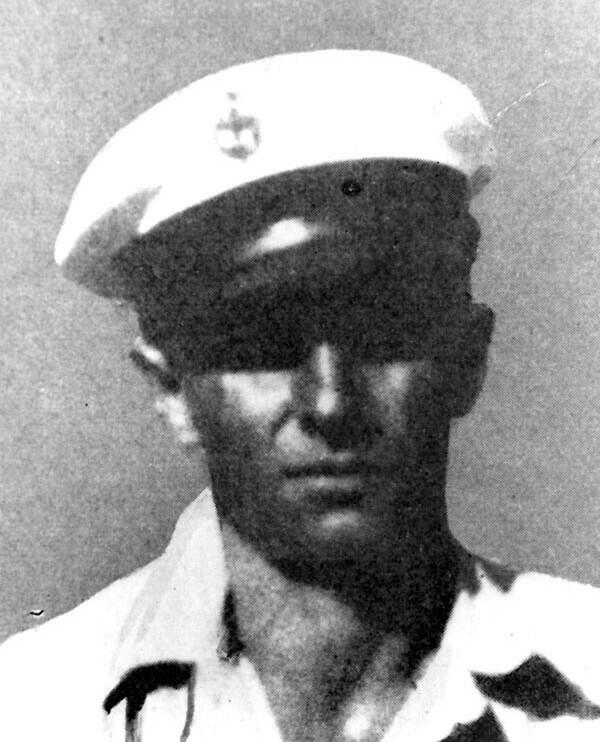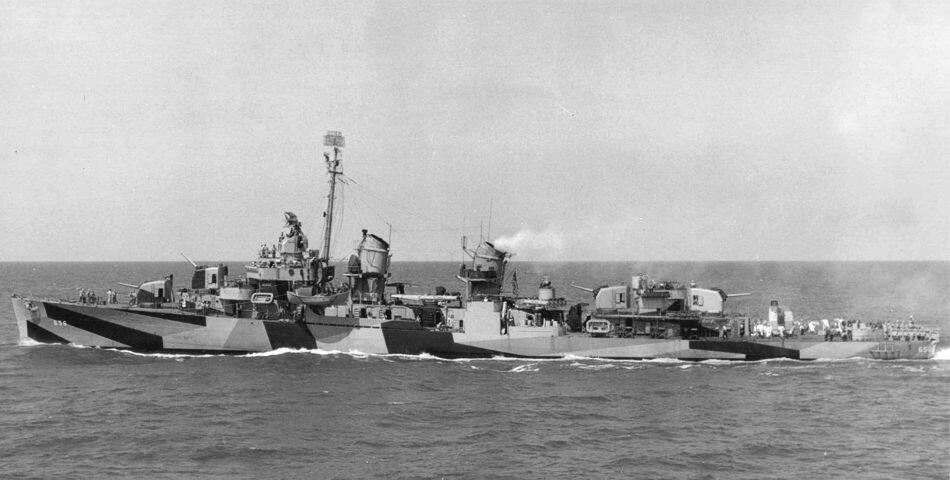Navy Ships Named for Pearl Harbor Heroes
On December 7, 1941, the United States was attacked by forces of the Imperial Japanese Navy. More than 2,400 Americans were killed during the raid and a legacy was born. Part of that legacy, commemorated annually on the anniversary of the attack, are the servicemen who lost their lives that morning. All of those men were—and still are—honored through all kinds of awards and commemorations, but a few were given the high honor of having ships of the US Navy named for them after their deaths.
USS Bennion (DD-662)
Utah native Mervyn Sharp Bennion graduated from the United States Naval Academy in 1910 and rose to the rank of Captain before taking command of the battleship USS West Virginia (BB-48). Captain Bennion was mortally wounded during the attack and, despite the efforts of Doris Miller and others, died aboard the ship.
The Fletcher-class destroyer USS Bennion was commissioned into service on December 14, 1943. She was decommissioned in June of 1946. USS Bennion earned 10 Battle Stars for her service in the Pacific Theater.
USS Flaherty (DE-135)
Francis Charles Flaherty of Charlotte, MI joined the US Navy Reserve on July 6, 1940. Within six months, he was appointed ensign aboard the battleship USS Oklahoma (BB-37). On the morning of December 7, 1941, Flaherty refused to leave his turret as his fellow crew members attempted to escape. He held a flashlight up to light their way and was ultimately trapped in the battleship when she capsized and sank.
The Edsall-class destroyer escort USS Flaherty was commissioned into service on June 26, 1943 and remained in service until June, 1946, earning four Battle Stars and a Presidential Unit Citation.
USS Herbert C. Jones (DE-137)
Launched in January of 1943, the Edsall-class destroyer escort USS Herbert C. Jones was named after the Los Angeles native who enlisted with the Navy Reserve in May, 1935. He served for six years before being assigned to the battleship USS California (BB-44) at Pearl Harbor two weeks after being receiving his ensign's commission. Jones risked his life to rescue a sailor caught in a smoke-filled hatchway and then began firing on the attacking pilots as they passed overhead. While waiting for more shells, a bomb struck California, mortally wounding him.
On July 21, 1943, USS Herbert C. Jones was commissioned into service. She served throughout the war and was decommissioned in May 1947. She earned three Battle Stars and a Navy Unit Commendation
USS Hill (DE-141)
Born in Philadelphia, Edward Hill enlisted in the US Navy in 1912. He was a Chief Boatswain by the time of the attack on Pearl Harbor, serving aboard the battleship USS Nevada (BB-36). Hill’s last act was an attempt at dropping the ship’s anchor. Survivors say Hill ordered young sailors to take cover behind Nevada’s turrets, saving their lives.
Another Edsall-class destroyer escort, USS Hill was commissioned into service on August 16, 1943 and decommissioned just under three years later.
USS Kidd (DD-661)
Isaac Kidd was born in Cleveland, OH on March 26, 1884 and enlisted in the Navy in 1902. At the time of the attack on Pearl Harbor, Kidd was Commander of Battleship Division 1 and Chief of Staff and Aide to the Commander, Battleship Battle Force. On the morning of the assault, Kidd, by this time a Rear Admiral, he was on board his flagship USS Arizona (BB-39) when a Japanese bomb detonated in the forward magazine, causing Arizona to explode and sink, killing him and making him the highest-ranking casualty of Pearl Harbor and the first Admiral ever killed in action.
USS Kidd was commissioned into service on April 23, 1943 and had a long and active service,until finally being decommissioned on June 19, 1964. For her service, she was awarded 12 Battle Stars.
USS Reeves (DE-156)
Connecticut native Thomas James Reeves first enlisted as an Electrician in the Naval Reserve in 1917 at the age of 22. After an initial discharge, he re-enlisted in 1921 and ultimately landed as the Chief Radioman on the battleship USS California. As his ship filled with smoke and flames, Reeves assisted with delivering ammunition by hand after a lift broke down. During his heroic actions, he was overcome by smoke and flames.
On June 9, 1943, the Buckley-class destroyer escort USS Reeves was commissioned into service. She was decommissioned at the end of July, 1946 and later sold to the government of Ecuador. USS Reeves was awarded one Battle Star for her service in World War II.
USS Scott (DE-214)
On the morning of December 7, 1941, Ohio native Robert R. Scott, who enlisted in the Navy in April, 1938, was also serving aboard USS California, as a Machinist's Mate First Class. Scott was assigned to a compartment that flooded following a torpedo strike. Despite the mortal danger, Scott remained behind to keep the air compressor operational.
Another Buckley-class destroyer escort, USS Scott was launched on April 3, 1943, and served during World War II in the Atlantic and Mediterranean. She was decommissioned in March of 1947.
USS Tomich (DE-242)
Peter Tomich, a Croat immigrant, enlisted in the US Navy in 1919. After initial service aboard USS Litchfield (DD-336), Tomich was reassigned to the boiler room of USS Utah (BB-31/AG-16). Though she had been converted to a target ship before the Pearl Harbor attack, Utah was targeted by Japanese pilots. Tomich ignored the order to abandon ship and remained below to ensure the men serving with him were not trapped in their stations.
USS Tomich, an Edsall-class destroyer escort, was commissioned in July, 1943 and had an active service throughout World War II. She was decommissioned in September of 1946 and eventually sold for scrap. For her service in World War II, USS Tomich was awarded one Battle Star.
USS Van Valkenburgh (DD-656)
Franklin Van Valkenburgh graduated from the United States Naval Academy in 1909. Van Valkenburgh had a lengthy service that saw him serve aboard various vessels before he became commanding officer of the battleship USS Arizona. Following a massive explosion, Van Valkenburgh was thrown from the bridge, where he kept himself in harm’s way to continue leading the ship's defenses. His body was never found, and search efforts only recovered his class ring.
The Fletcher-class destroyer USS Van Valkenburgh was laid down in November, 1942 and commissioned on August 2, 1944. Her long service in both World War II and the Korean War ended with her decommissioning in February of 1954. USS Van Valkenburgh was awarded a Navy Unit Commendation, three Battle Stars for her World War II service, and another one for her service in Korea.
USS J. Richard Ward (DE-243)
James Richard Ward left his home in Springfield, OH to join the Navy in November of 1940, shortly after his 19th birthday. After basic training, he joined the crew of USS Oklahoma and, during the December 7, 1941 attack, became one of the 429 crewmen killed. He remained in a turret with a flashlight to give the crew a chance to escape. Ward never emerged from the vessel.
USS J. Richard Ward, an Edsall-class destroyer escort, was commissioned on July 5, 1943 and remained in service until her decommissioning in July of 1946.











